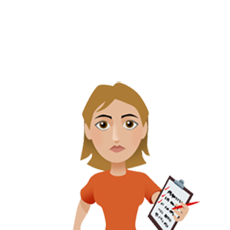Make a Game Out of Tasks & Chores (Even for Teens!)

Trying to get things done at home? Complex brains need a motivation to get anything done, and two of the five key avenues for motivation are play and competition. If you can make a game out of something, it increases the chances that it will gain or hold your child's attention, and that he'll stick with it long enough to learn a new habit. Besides, games are a familiar language for the digital generation.
Games are Good For Kids of All Ages
We use games quite naturally when our kids are very little: we march to the van for ballet or soccer (with a parent leading with a baton), clean off the kitchen counters while singing Aretha at full volume into a wooden spoon, or race against the clock to see who can get up the stairs first to get ready for bed.
As kids get older, we forget how effective games can be. Elaine loves to tell the story about her three teenagers finding the motivation to go to the grocery store by dressing up as superheroes, complete with capes and shorts over leggings (it was their idea). You can challenge the family to see how fast they can unload the dishwasher so everyone can watch a family movie.
Keep Games Fun to Get Things Done at Home
Sometimes, making a game of things can lead to “messy” work, so use this strategy when you're trying to get kids to do a task – not when you're working on quality control. For example, if you're getting your child into the habit of unloading the dishwasher, don't worry at first about drying off the silverware before putting it away. If you want him to throw his laundry into the hamper, allow him the extra practice of a few missed “balls” while he's trying to make a swish. Keep it fun.
Also, remember that games do not need to be competitive. Competition is an anti-motivator for some kids. If your child does not have a good tolerance for the frustration of losing a game, or if your child is still extremely sensitive about doing anything wrong, then focus on the play part of creating games, without the emphasis on winners and losers.
So if you're trying to get things done at home, lean into a little playfulness ... and see what comes up from there. You might find it's more fun for you, too!
Article continues below...
Want to Motivate Kids?
Download a free tipsheet "The Parent's Guide to Motivating Your Complex Kid" to help your child find the motivation to do... anything and everything!
Another Approach: A Client Success Story
My clients are brilliant at solving their problems!! And let me be honest...since getting my kids to clean my house is not a forte of mine, this is all Rene's success!!
For many reasons, Rene decided that she wants her family to participate more in cleaning the house. Of course, she'd like the help, but most importantly, she wants everyone to feel responsible for caring for the shared household.
The first time we coached around this issue, she came up with a plan. She decided when the family would have cleaning time, what needed to be done, who would do what – and left our call intent to put her new plan into action.
The second time we talked, we coached around which parts of her plan had worked, and which parts had not. (See: Failing Forward).
What Worked?
We started by celebrating the successes – the “wins” in her corner. What worked? She had:
- set a clear expectation
- communicated it with the family
- put a structure in place
- started getting the family to help out
What Didn't Work
Then we looked at “what didn't work.” She realized that she had NOT:
- given anyone a choice about what tasks they'd do
- given the family a choice about when “cleaning time” would be
- gotten buy-in from the family
Test And Learn
In our coaching conversation, Rene determined to tweak some things and try again. She left ready to celebrate with her family, and do more to get their input on the process. Sure, she could “force” them to clean the house with her, but she realized that getting them to feel some ownership of the process will improve their buy-in – and ultimately lead to better results.
Of course, this process works for getting buy-in for anything that needs to get done – but wouldn't it be great if you used it for cleaning your house?


